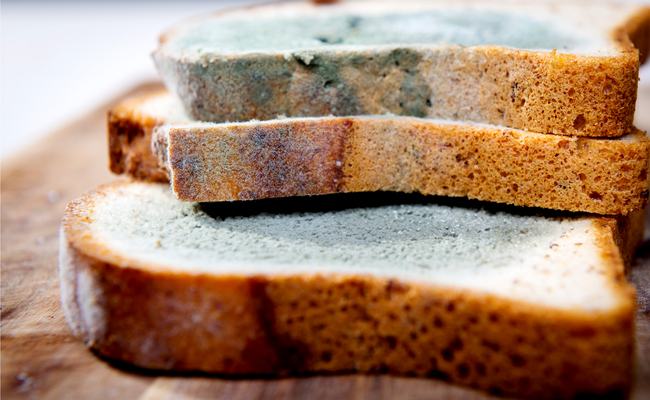
What’s your stance on moldy bread? Do you eat it with relish (after cutting off the moldy part, of course, you’re not an animal) or do you take a look at the green fuzz, scrunch up your face and immediately toss the whole loaf in the garbage, even though your parents would be so, so ashamed of you for being a wasteful cretin? If you’re in the former camp, we’ve got some bad news for you, so put down the slice of bread that’s quickly turning a nice mossy color and step away from the kitchen table.
Because people still aren’t sure whether moldy bread is cool to eat, evidenced by the fact that someone sent in a question to NPR about the subject, the public radio behemoth went out and got some answers. And after speaking to food experts, they learned that eating moldy bread is really, really bad for you. Yes, even if you cut off the moldy parts, that already assumed.
“We don’t recommend cutting mold off of bread, because it’s a soft food,” says Marianne Gravely, a senior technical information specialist for the United States Department of Agriculture. “With soft food, it’s very easy for the roots [of the mold], or the tentacles, or whatever creepy word you want to use, to penetrate” deeper into the food.
But wait, there’s more:
Gravely says people who eat moldy food may suffer allergic reactions and respiratory problems. Even inhaling mold can be dangerous. To avoid breathing mold, the USDA recommends putting food in a plastic bag and then in a covered trashcan, out of the reach of children and animals.
First of all: Tentacles. Terrifying. I had never thought of mold as looking like Davy Jones before, but now that I’ve heard that tentacles are involved, all I can picture is this scene from Pirates of the Caribbean: At World’s end.
Thanks food experts, I’ll never eat carbs again.
Now that we’ve established that mold is scary, let’s temper our fear with some caveats. While you shouldn’t eat bread that’s teeming with minuscule mushrooms as a rule, you can make an exception if your loaf has already been sliced. While mold can absolutely jump from one piece of bread to another — and Gravely points out that once you see mold, other more terrible bacteria may have already claimed prime real estate on your food — if you think that one side of the loaf hasn’t been affected, you can take a calculated risk. And if the mold appears on harder foods — carrots, peppers, cabbage — you can excise that mold with a clean knife and continue soldiering along as if nothing ever happened. Fruit, meat, and jam? Drop it in the trash, delete its number, and forget it ever existed.






